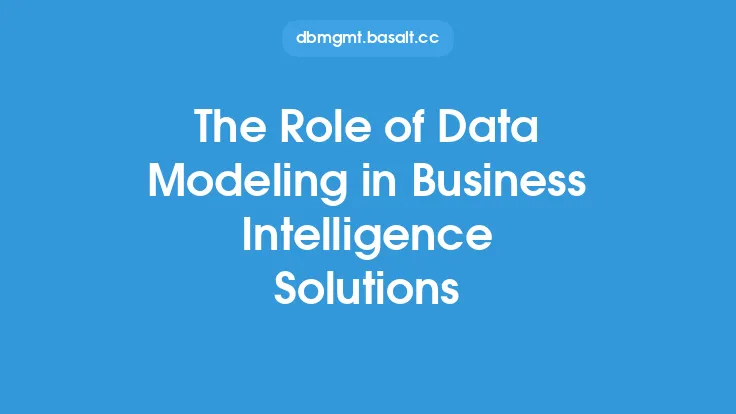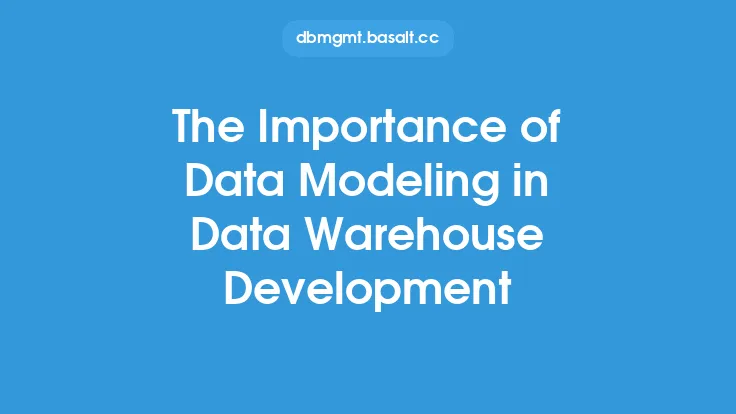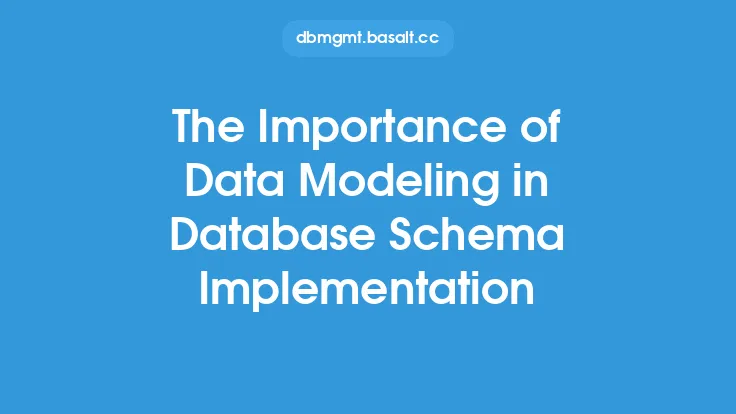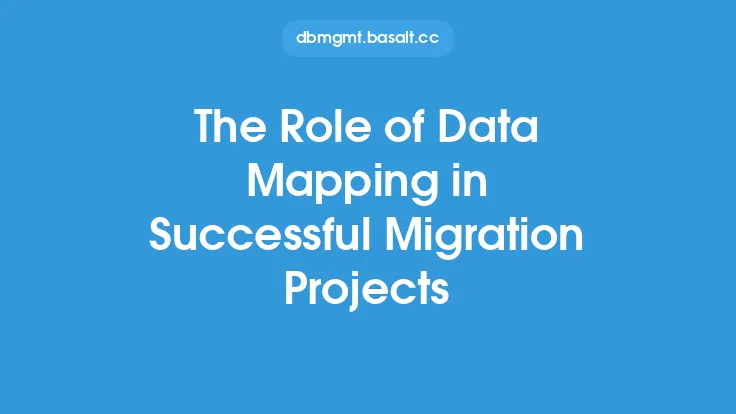In today's data-driven business landscape, organizations are constantly seeking ways to leverage their data assets to gain a competitive edge. Business intelligence (BI) projects play a crucial role in this pursuit, as they enable companies to extract insights from their data and make informed decisions. At the heart of any successful BI project lies a robust data modeling framework. Data modeling is the process of creating a conceptual representation of an organization's data assets, which serves as the foundation for all subsequent BI activities. In this article, we will delve into the importance of data modeling in business intelligence projects, exploring its role, benefits, and best practices.
Introduction to Data Modeling
Data modeling involves creating a visual representation of an organization's data entities, attributes, and relationships. This process helps to identify, classify, and organize data into a structured format, making it easier to understand and analyze. A well-designed data model provides a common language and framework for stakeholders to communicate and collaborate, ensuring that everyone is on the same page. Data modeling is not a one-time activity, but rather an iterative process that evolves as the organization's data landscape changes.
Benefits of Data Modeling in Business Intelligence
The benefits of data modeling in BI projects are numerous. Firstly, a robust data model ensures data consistency and accuracy, which is critical for making informed decisions. By defining a common set of data entities and attributes, organizations can avoid data redundancy and inconsistencies, resulting in more reliable insights. Secondly, data modeling enables organizations to identify data gaps and opportunities for data integration, which can lead to a more comprehensive understanding of the business. Thirdly, a well-designed data model provides a scalable framework for future data growth, making it easier to incorporate new data sources and systems. Finally, data modeling facilitates data governance, as it provides a clear understanding of data ownership, stewardship, and security.
Data Modeling Techniques for Business Intelligence
There are several data modeling techniques that can be applied to BI projects, including entity-relationship modeling, dimensional modeling, and object-relational modeling. Entity-relationship modeling is a traditional approach that focuses on identifying entities, attributes, and relationships. Dimensional modeling, on the other hand, is a more specialized approach that is optimized for data warehousing and business intelligence applications. Object-relational modeling is a hybrid approach that combines the benefits of entity-relationship modeling with the flexibility of object-oriented modeling. The choice of data modeling technique depends on the specific requirements of the BI project, as well as the organization's data management maturity.
Data Modeling Tools and Technologies
A range of data modeling tools and technologies are available to support BI projects, including data modeling software, data governance platforms, and data integration tools. Data modeling software, such as Entity-Relationship Diagram (ERD) tools, provides a visual interface for creating and editing data models. Data governance platforms, such as data catalogs and metadata management systems, help to manage data quality, security, and compliance. Data integration tools, such as extract-transform-load (ETL) software, enable organizations to integrate data from multiple sources and systems. The choice of data modeling tool or technology depends on the specific requirements of the BI project, as well as the organization's existing technology infrastructure.
Best Practices for Data Modeling in Business Intelligence
To ensure the success of a BI project, it is essential to follow best practices for data modeling. Firstly, involve stakeholders from across the organization to ensure that the data model meets the needs of all users. Secondly, use a iterative and agile approach to data modeling, as this will enable the organization to respond quickly to changing business requirements. Thirdly, use data modeling standards and conventions to ensure consistency and accuracy. Fourthly, document the data model and its associated metadata, as this will provide a clear understanding of the data assets and their relationships. Finally, continuously monitor and refine the data model, as this will ensure that it remains relevant and effective over time.
Common Challenges and Pitfalls
Despite the importance of data modeling in BI projects, there are several common challenges and pitfalls that organizations may encounter. Firstly, data modeling can be a time-consuming and resource-intensive process, requiring significant investment in people, processes, and technology. Secondly, data modeling requires a deep understanding of the organization's data assets and business requirements, which can be difficult to achieve. Thirdly, data modeling is often seen as a technical activity, rather than a business-driven initiative, which can lead to a lack of stakeholder engagement and buy-in. Fourthly, data modeling can be affected by organizational politics and cultural barriers, which can hinder the ability to create a unified and consistent data model. Finally, data modeling is not a one-time activity, but rather an ongoing process that requires continuous monitoring and refinement.
Conclusion
In conclusion, data modeling is a critical component of any successful BI project, providing a foundation for data analysis, reporting, and decision-making. By understanding the importance of data modeling, applying best practices, and using the right tools and technologies, organizations can create a robust and scalable data model that meets the needs of all stakeholders. While there are common challenges and pitfalls to be aware of, the benefits of data modeling in BI projects far outweigh the costs. As organizations continue to evolve and grow, their data modeling capabilities must also evolve to keep pace, ensuring that they remain competitive and agile in an ever-changing business landscape.





